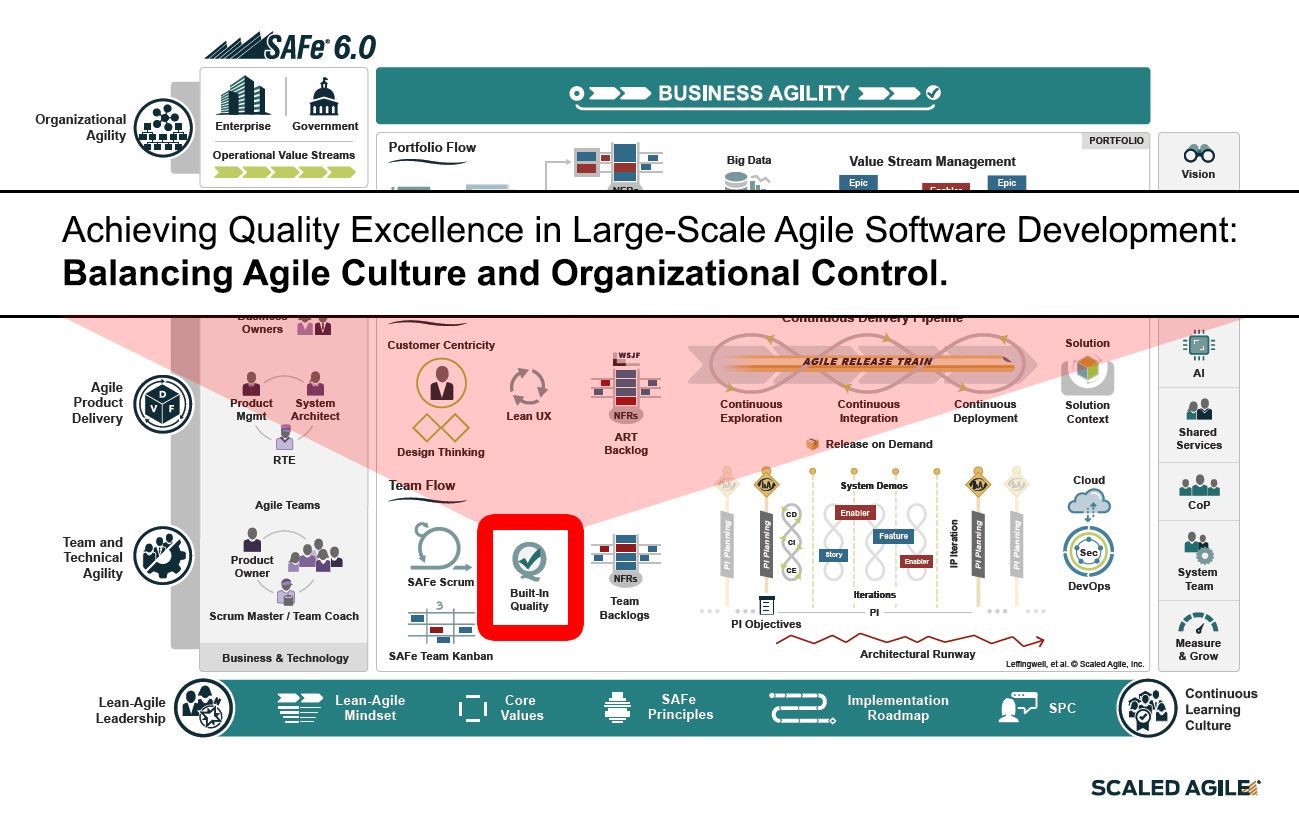Quality Assurance in Large-Scale Agile Software Development
Quality Assurance in Large-Scale Agile Software Development

Topic
Quality assurance plays a vital role in software development, and it is undergoing significant changes alongside the agile transformation of companies towards large-scale agile software development. This presents new challenges for both organizations and practitioners, as they need to adapt established methods and processes to agile approaches. This study aimed to investigate the key factors that enable good software quality assurance in large-scale agile software development.
Relevance
This research is relevant for practitioners as it offers insights from experts and successful organizations, guiding them in addressing the challenges of quality assurance in large-scale agile software development. The findings highlight the complexity and interdependencies among enablers, supporting practitioners in adapting methods, selecting personnel, and fostering personal development efforts. Emphasizing the collective effort required, the research provides practical recommendations for enhancing product quality in the context of agile transformations.
Results
The results highlight the key factors that enable good quality in large-scale agile software development. Examples include the importance of a controlled error culture, where small errors are allowed but large errors are avoided, which promotes continuous improvement. In addition, the level of team ownership plays a critical role, as teams directly bear the consequences for the quality of their software products, leading to a sense of ownership and accountability. These factors foster a culture of learning, risk-taking, and collaborative teamwork, which ultimately contributes to better quality outcomes in large-scale agile software development.
Implications for practitioners
The implications for practitioners related to quality assurance in large-scale agile software development suggested in the master thesis include:
- Emphasize agile culture: practitioners should prioritize fostering an agile culture that values collaboration, continuous improvement, and a controlled error culture. This can create an environment that encourages good quality as part of the work routine.
- Balance organizational control and team autonomy: Finding the right balance between organizational control and team autonomy is critical. Practitioners must establish clear guidelines and specifications to share best practices and ensure compliance, while allowing teams the freedom to act on their own and take responsibility for the quality of their products.
- Develop personal skills: Personal skills such as communication, business knowledge, and technical expertise are essential for practitioners, including testers, to effectively participate in interdisciplinary teams. Strengthening these skills can improve collaboration and contribute to better quality outcomes.
- Recognize the importance of team autonomy: Practitioners should recognize the importance of team autonomy to quality. Giving teams the freedom to make decisions and take responsibility for their work fosters a sense of responsibility and accountability, which ultimately improves quality.
- Continuous adaptation and improvement: practitioners must adopt a mentality of continuous adaptation and improvement. Quality assurance should be viewed as an ongoing process that requires regular assessment, optimization, and adaptation to meet the evolving needs and goals of the organization.
Methods
The methodology involves a combination of literature review and semi-structured expert interviews. The research questions focus on identifying enablers for product quality and understanding their dependencies. Data was collected through 10 interviews with experts from quality assurance and agile methodology groups. The interviews were conducted online (MS Teams), recorded, and transcribed. The data was analyzed using inductive coding (MAXQDA) to discover themes and connections. The resulting structure formed the basis for further analysis, providing valuable insights for practitioners and future research in this field.
